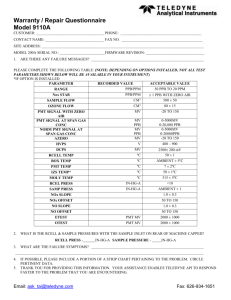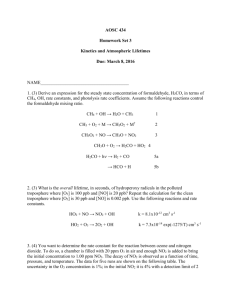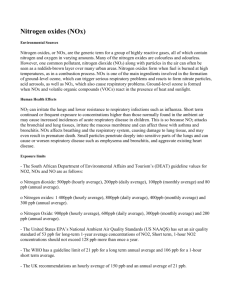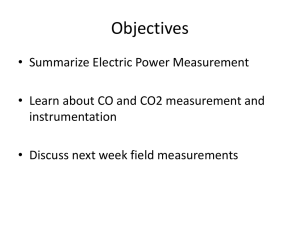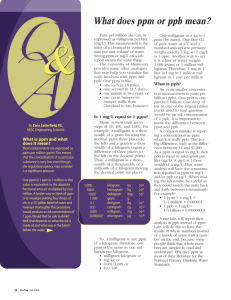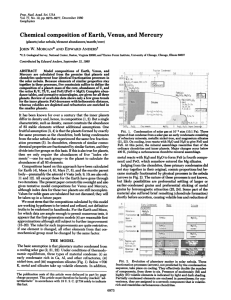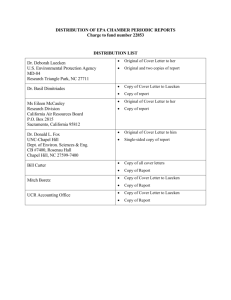Mobile Lab
advertisement
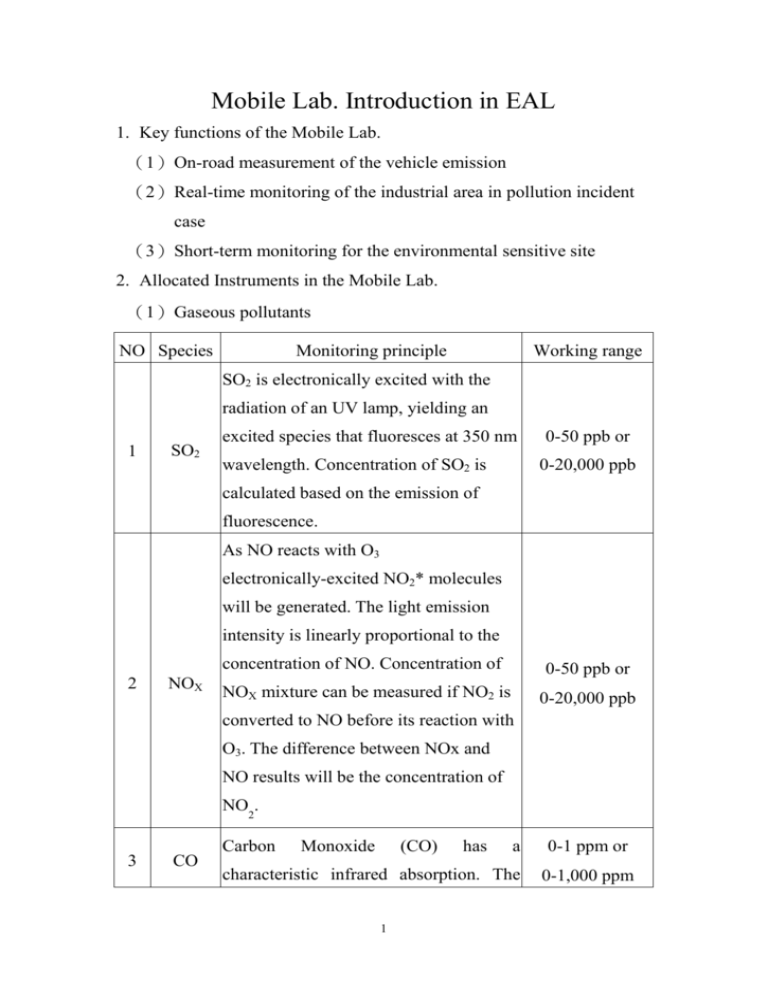
Mobile Lab. Introduction in EAL 1. Key functions of the Mobile Lab. (1) On-road measurement of the vehicle emission (2) Real-time monitoring of the industrial area in pollution incident case (3) Short-term monitoring for the environmental sensitive site 2. Allocated Instruments in the Mobile Lab. (1) Gaseous pollutants NO Species Monitoring principle Working range SO2 is electronically excited with the radiation of an UV lamp, yielding an 1 SO2 excited species that fluoresces at 350 nm wavelength. Concentration of SO2 is 0-50 ppb or 0-20,000 ppb calculated based on the emission of fluorescence. As NO reacts with O3 electronically-excited NO2* molecules will be generated. The light emission intensity is linearly proportional to the 2 NOX concentration of NO. Concentration of 0-50 ppb or NOX mixture can be measured if NO2 is 0-20,000 ppb converted to NO before its reaction with O3. The difference between NOx and NO results will be the concentration of NO2. 3 CO Carbon Monoxide (CO) has a characteristic infrared absorption. The 1 0-1 ppm or 0-1,000 ppm absorption of infrared radiation by CO molecules can be used to measure CO concentrations using the non-dispersive infrared (NDIR) detector system. Carbon Dioxide (CO2) has a characteristic infrared absorption. The 4 CO2 absorption of infrared radiation by CO2 0-2 ppm or molecules can be used to measure CO2 0-2000 ppm concentrations using the non-dispersive infrared (NDIR) detector system. Ozone’s has a characteristic absorption 5 O3 of UV at 254nm which can be used to 0-100 ppb or measure the concentration of Ozone(O3) 0-10 ppm in the sample gas. Flame Ionization Detector (FID) with 6 TNMH catalytic subtraction is used to measure the concentration of total non-methane <20 ppm hydrocarbons. As NO reacts with O3 electronically-excited NO2* molecules will be generated. The light emission intensity is linearly proportional to the 7 NH3 concentration of NO. Concentration of 0-50 or NOX mixture can be measured if NH3 is 0-2,000 ppb converted to NO before its reaction with O3. The difference between NOx and NO results will be the concentration of NH3. 2 (2) Aerosol carbons NO Species Monitoring principle Working range The Organic carbon in the collected samples is oxidized to CO2 with manganese dioxide under anaerobic state detect with Flame Ionization Detector to (FID) obtain the concentration of organic carbon(OC). 1 EC/OC On the other hand, the elemental - carbon will be converted to CO2 under the atmosphere of 2% O2 in manganese dioxide oxidizing oven and detect with measured by the Flame Ionization Detector (FID) to obtain the concentration of elemental carbon (EC). (3) Particle pollutants NO Species Monitoring principle Working range Comparing the β-ray attenuation of the filter before and after PM10(or 1 PM10/PM2.5 PM2.5) sampling .calculate PM10(or PM2.5) concentration base on the reading of β-ray attenuation (4) Auxiliary Meteorological instruments 1、Weather vane and anemometer 2、Hygrothermograph 3 0 ~ 1 x 104 μg / m3 (5)GPS and on-line data collection system 1、Data collection system 2、Global Positioning System, GPS 3、Monitoring system and video recorder 4 鋼瓶室 5
